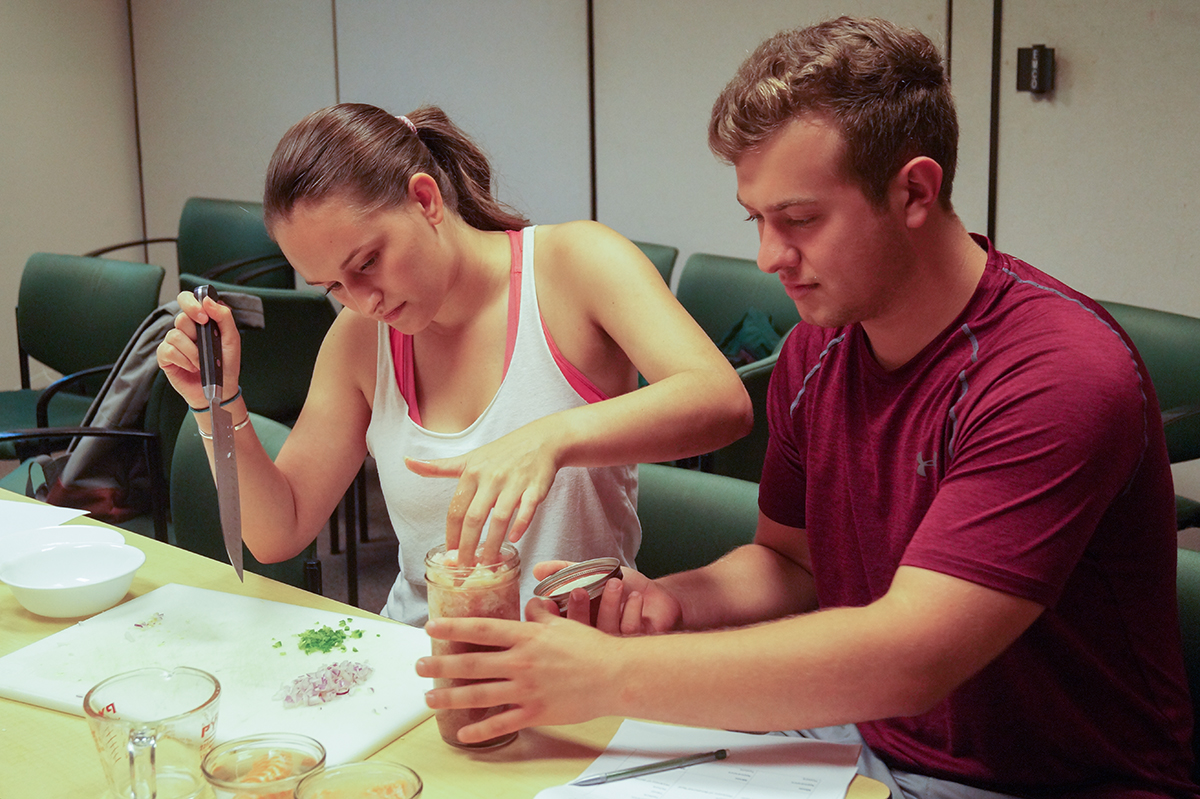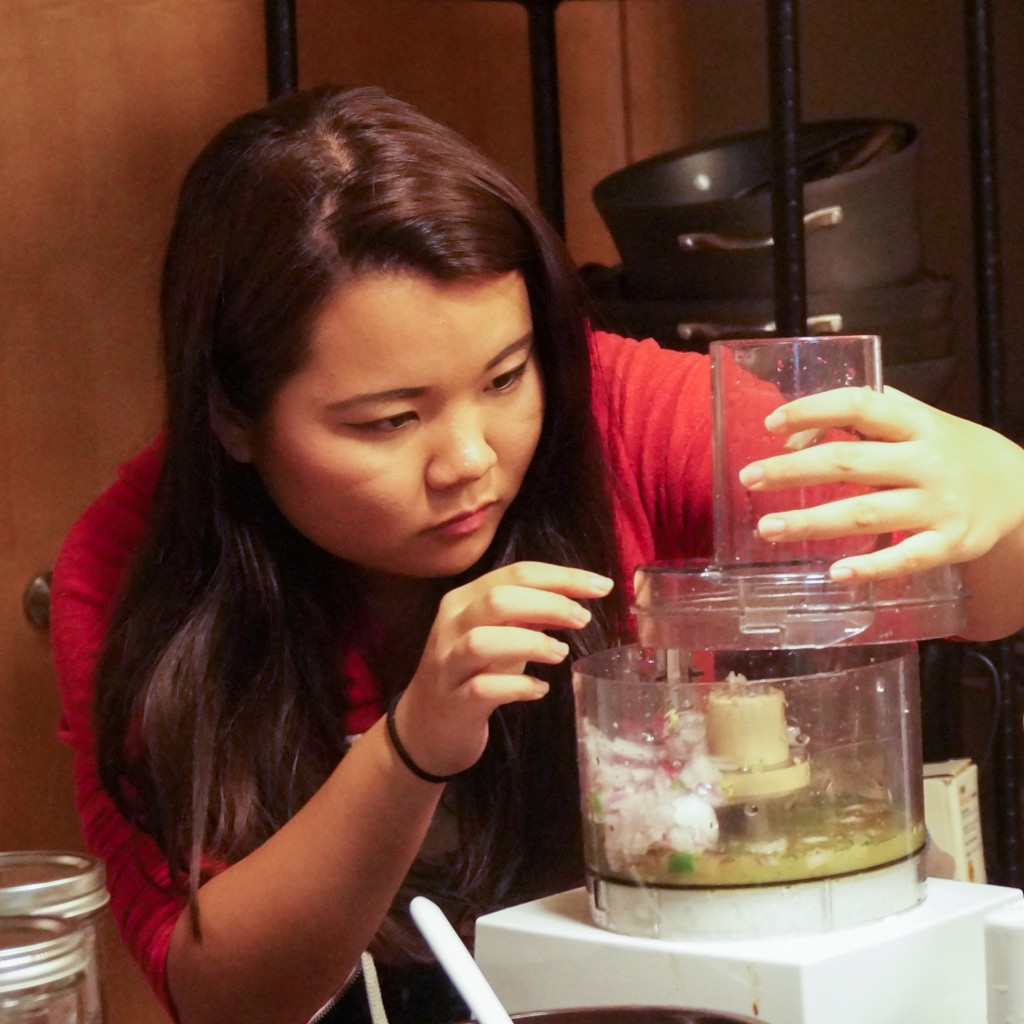

Beakers, test tubes, chemical processes and food may sound like a questionable combination, but Professor Barbara Colonna brought them together in a tasty class students can’t get enough of.
The Chemistry of Food and Taste (CHM 317) combines four semesters’ worth of knowledge of chemistry and the love of eating for a learning experience that’s gaining popularity on campuses across the nation.
Colonna’s class is structured around a “play with your food” method in which a new topic is explored and experimented on each week using recipes and, of course, taste buds.
Students said they love the class because it’s a new way to go about the traditional chemistry education.
Senior David Song said the course is a breath of fresh air from his other more stressful classes.
“The teacher is an amazing teacher and this is a non-hostile environment, so it’s really the best of both worlds,” Song said.
This week’s class focused on the changes of the pH balance in fish and eggs. Ceviche, century egg and lutefisk recipes were the three used in the research. The dishes were created using low pH solutions like lime juice and higher pH solutions like sodium hydroxide.
Students are looking forward to many upcoming recipes including liquid nitrogen ice cream, homemade bread, pasta and molten chocolate lava cake.
Junior Doug Nguyen said the new approach to chemistry has been very beneficial.
“In a lot of classes you just learn about concepts, but in something like this, you really get to apply practical applications,” Nguyen said.
Before the students start cooking, Colonna leads a discussion on the chemical processes that will ensue and how slight changes in the recipes could ultimately affect the entire dish.
“I had students who could not break an egg and they end up doing complicated dishes,” Colonna said. “If you understand what goes on scientifically, you can really change the game.”
Before becoming a professor six years ago, Colonna earned a supramolecular organic chemistry Ph.D. from UCLA and later worked as a professional baker at Lyon Freres, a local high-end restaurant in Miami.
Nearly two decades ago, Colonna came up with the idea to combine her two loves of chemistry and food for the course. After talking it over with her friends, she finally gathered the courage to pitch it to UM.
For some students like senior Maria Teresa Gallin, Colonna’s class has sparked a new interest. Gallin said after taking Colonna’s class and becoming a teacher’s assistant, she is unsure whether she still wants to attend medical school.
“My mother always made really good bread, but after I had my experience in her class when she brought a professional baker, that’s when I became really interested,” Gallin said.
She has since competed in competitions as an amateur baker.
Students in the course also have multiple chances to create their own experiments as part of a “Go Well Together” lab and the final project in which they form their own recipe.
The “Go Well Together” lab encourages students to create food pairings based on molecular similarities and not traditional recipes. Each semester, students have to choose something that has not been created in the past.
Dark chocolate and cauliflower, strawberries and cilantro, lavender and apple, and smoked salmon and dark cocoa are some of the pairings students have created in the past.
In order to take the course, students must first pass six credits of organic chemistry, and the course counts towards the chemistry minor.
Colonna hopes that the course will continue to grow and is excited that her dream of combining her two passions has been so successful.






